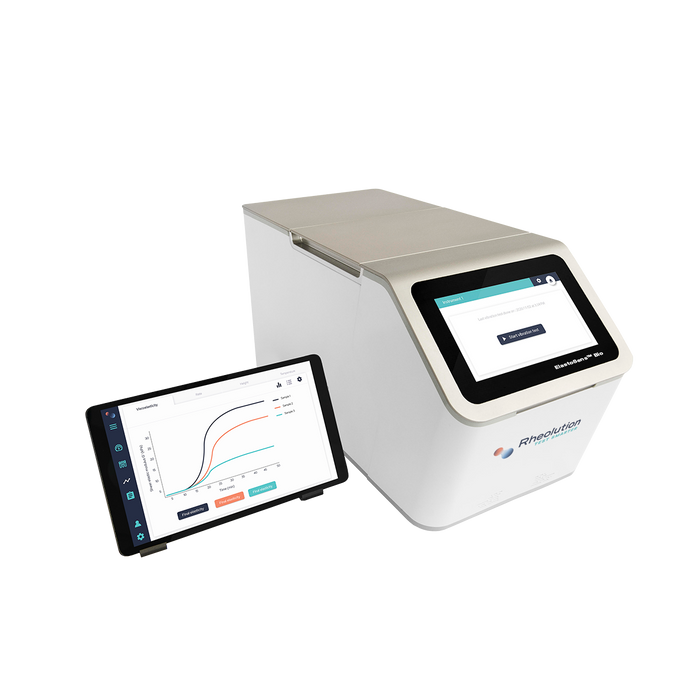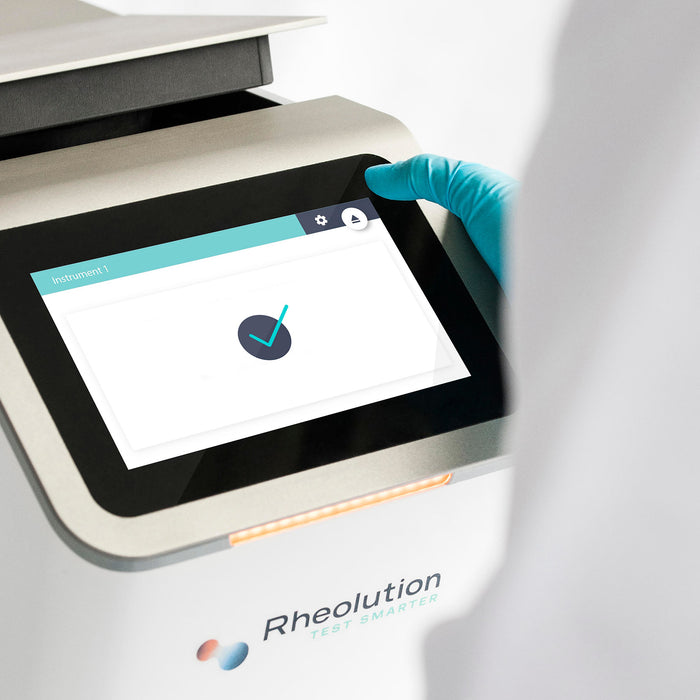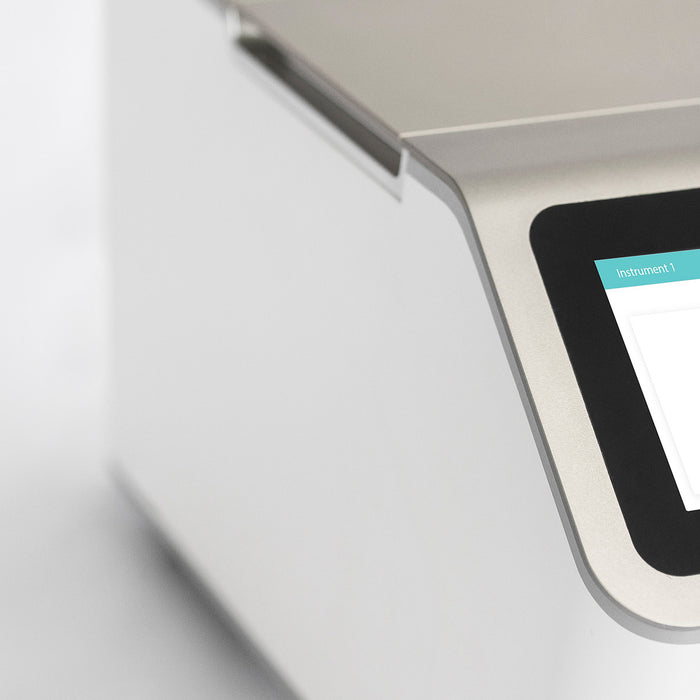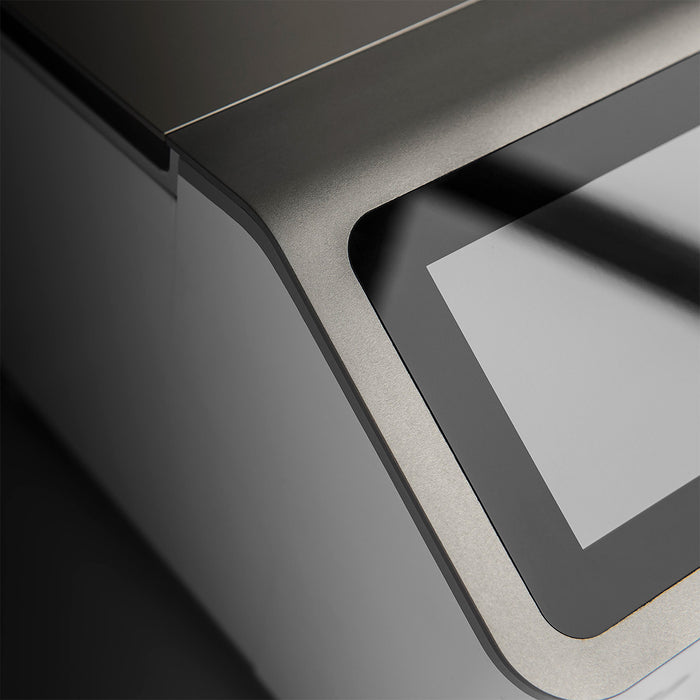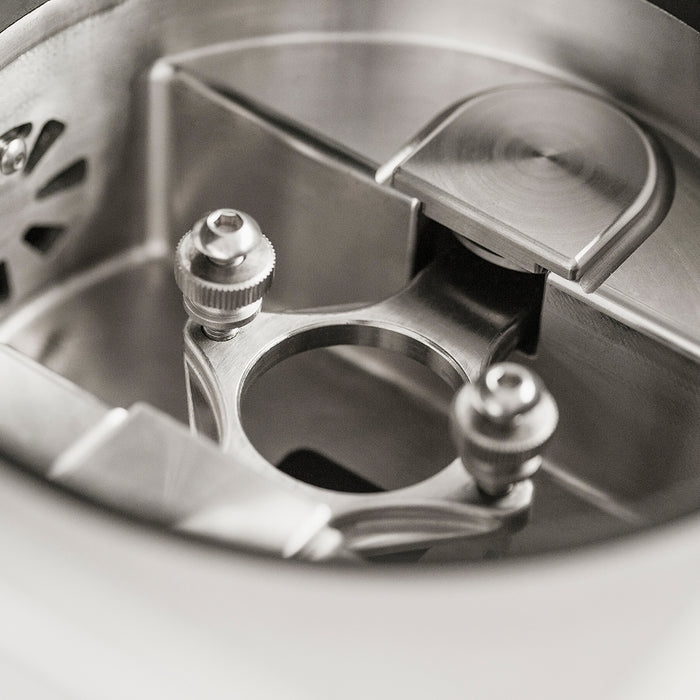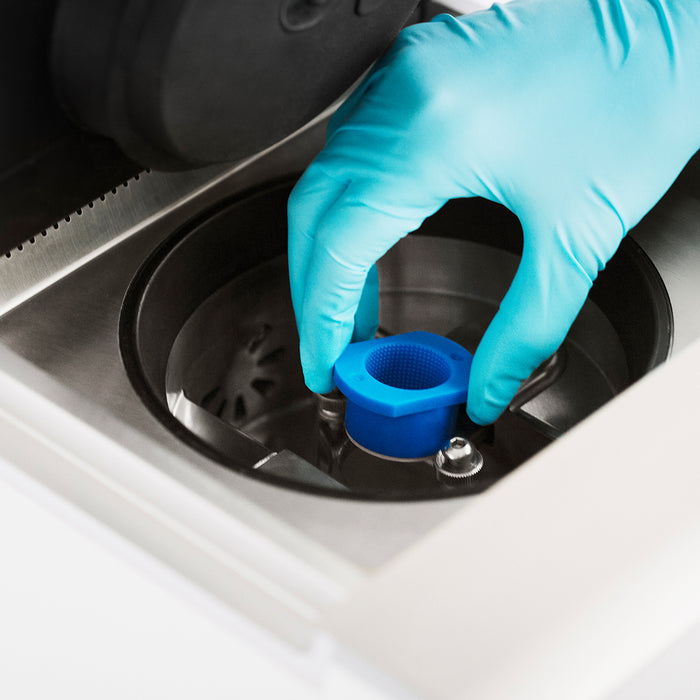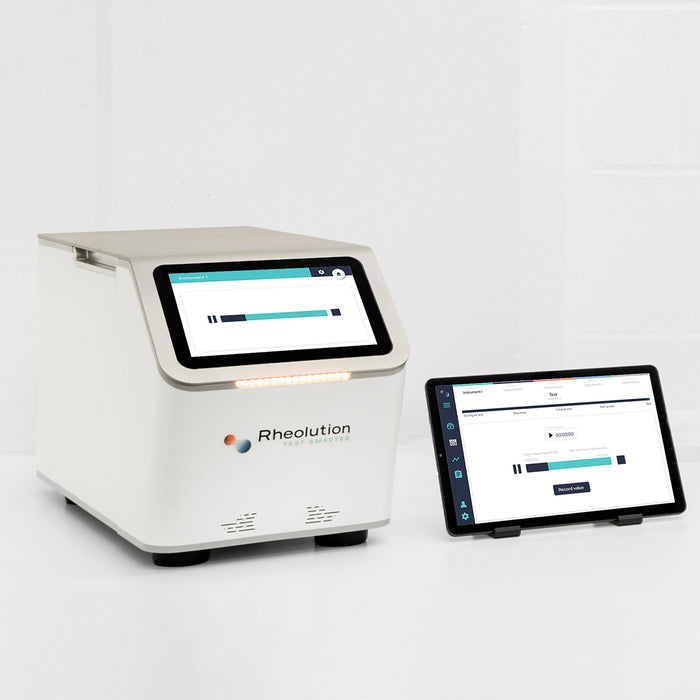
ElastoSens™ Bio
Non-destructive and Contact Free Mechanical Testing of Soft Biomaterials. ElastoSens™ Bio measures the viscoelastic properties of soft materials in real-time, without contact and without destroying the sample. Samples are contained into removable sample holders that can be disconnected, stored out of the instrument and re-connected for re-testing as many times as required. The ElastoSens™ Bio is operated by the ElastoSens Tablet App. The tablet can communicate remotely with the instrument using a wireless and secured communication protocol, or wired to the instrument for communication. It is possible to connect up to five (05) ElastoSens™ Bio units to a single ElastoSens Tablet App in order to operate them in parallel. This modularity allows running a high number of tests in parallel and increases the productivity of routine testing while managing individual instruments from a single Tablet. The system can be extended at any time by adding additional units of ElastoSens™ Bio.
- Contact free viscoelastic measurements of the sample’s shear complex dynamic modulus: shear storage modulus G’, shear loss modulus G’’, shear complex modulus G* and loss tangent Tan(d). The shear complex dynamic modulus is measured for samples having a shear storage modulus (G’) higher than 500 Pa. For samples having a shear storage modulus (G’) smaller than 500 Pa, only the shear storage modulus (G’) is measured by the instrument.
- Shear storage modulus (G’) measurement range: from 1 Pa to 1 MPa (repeatability: ±1%).
- Loss tangent (Tan(d)) measurement range: 0 to 1 (repeatability: ±1%).
- Measurement of gel formation and degradation rate (dG’/dt) in Pascals/seconds.
- Contact free and real time measurement of sample height simultaneously with the viscoelastic properties. Sample height is correlated to sample’s volume.
- Height measurement range: from 1.0 mm to 20.0 mm (absolute precision: ±0.20 mm).
- Sample volume range: 0.35 mL to 7.0 mL. Required sample volume depends on the shear storage modulus of the sample.
- Basic temperature control between room temperature + 2°C and 50°C (absolute precision: ± 0.1°C).
- Temperature profiles: programmable temperature profiles (multiple sequences of ramps).
- Custom time steps between measurements from 2 seconds to 60 minutes.
- Custom total measurement time from 10 seconds to 240 hours.
- Dimensions of a single ElastoSens™ Bio unit (Width x Depth x Height): 9'' x 20'' x 10.5'' (23 cm x 50 cm x 27 cm).
- Weight of a single ElastoSens Bio unit: 35 Lbs (16 kg).
- Power Requirements: 100-240 Vac (±10%), 50 – 60 Hz.
- Max power consumption: 370 W.
The instrument includes a touchscreen 10.5’’ Windows Surface Go 3 Tablet (windows 10 Pro) with protective cover 9.65"x 6.9" x 0.04" (24.5 cm x 17.5 cm x 0.8 cm) and ElastoView, the Windows tablet App for ElastoSens Bio. Each ElastoView Tablet App can simultaneously communicate with and manage up to 5 instruments. The ElastoView Tablet App allows for: complete test setting (time, temperature and light), measurements, real-time data visualization, data archiving, data comparison, report creation, data and report transfer. The ElastoView Tablet App builds an extensive and secured database that can be exported. It includes simple back-up and update procedures.
- Performing operations such as start/pause/stop tests
- Changing thermal chamber temperature
- Displaying instrument status and main results
- Digital opening of the instrument’s measurement chamber
- Displaying measurements and built-on calculations: steady viscoelastic properties of materials (with no changes as a function of time, temperature or light), transient viscoelastic properties of materials (with changes as a function of time, temperature or light), calculation of gel formation and degradation rate (dG’/dt), real-time sample height (correlated to sample volume).
- Custom management of password-protected user accounts.
- Custom management of roles with different privileges (writing, reading, data transfer) and assignment of roles to users.
- Custom management of instruments remotely connected to the App: pairing, configuration, display name and display color.

